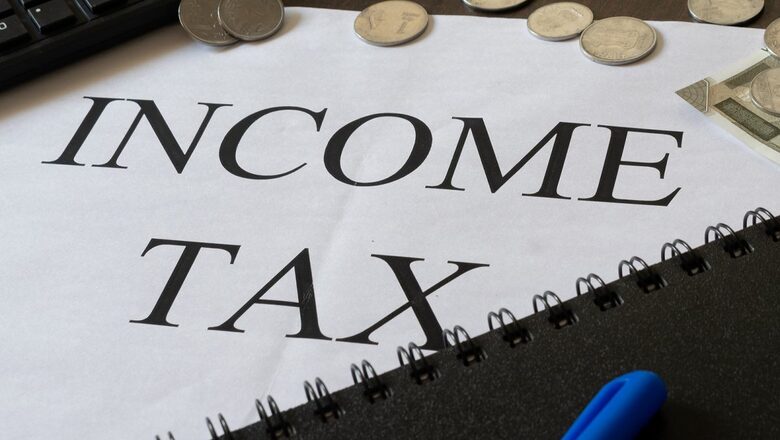
views
Individuals who do not need to audit their income accounts, must file income tax return or ITR for the assessment year 2022-23 by July 31, 2022. At present, there are two income tax regimes available for taxpayers — old income tax regime, new or concessional income tax regime. Before you file income tax return this year, let’s take a look at the tax regimes in details
Old Tax Regime:
There are over 70 exemptions and deductions available under the old tax regime to lower the tax burden of the individuals. For investing or spending on specific financial instruments, taxpayers can claim deductions.
For an example, Section 80C of the Income Tax Act, 1961 help the taxpayers to save up to Rs 1.5 lakh a year for various investments. To avail the benefits, individuals need to invest the amount in eligible schemes or spend the money on the specified deductible in the same financial year. The investments include Employees’ Provident Fund (EPF), Public Provident Fund (PPF), Equity Linked Saving Scheme (ELSS), National Pension Scheme (NPS), Unit Linked Insurance Plan (ULIP), Sukanya Samriddhi Yojana (SSY), National Savings Certificate (NSC), and five-year tax-saving fixed deposits with a bank and/or post office.
Taxpayers can also opt for a deduction of up to Rs 25,000 for insurance premiums. If the insured is above 60 years, the deduction can increase to up to Rs 50,000.
Salaried individual can claim exemptions on components of their salaries such as House Rent Allowance (HRA) and Leave Travel Allowance (LTA). A standard deduction of Rs 50,000 will also be available under the old tax regime.
New Tax Regime:
The concessional tax regime, which was introduced in Budget 2020, has more tax slabs and lower tax rates as compared to the old system. Also, the exemptions and deductions of the old tax regime have been removed.
Income tax slabs under old income tax regime vs new income tax regime:
Under the new tax regime, the annual income between Rs 5 lakh and Rs 7.5 lakh will be taxed at 10 per cent, while the earning ranging Rs 7.5 lakh-Rs 10 lakh a year will attract a 15 per cent tax. Under the old regime, those having an income between Rs 7 lakh and Rs 10 lakh came under a flat 20 per cent tax bracket.
Similarly, the income above Rs 10 lakh is divided into three slabs under the new tax regime — 20 per cent tax for income between Rs 10 lakh and Rs 12.5 lakh; 25 per cent for income between Rs 12.5 lakh and Rs 15 lakh; and 30 per cent tax on the income of Rs 15 lakh and above.
List of Some of the Exemptions and Deductions that Will Not Be Available Under New Tax Regime:
1) Leave travel allowance or LTA;
2) House rent allowance or HRA;
3) Standard deduction of Rs 50,000 currently available to all salaried individuals and pensioners;
4) Special deduction allowance under Rule 2BB (such as children education allowance, hostel allowance, transport allowance, per diem allowance, uniform allowance, etc.);
5) Allowance for clubbing of income of minor;
6) Exemption of SEZ under section 10 AA;
7) Deduction for entertainment allowance and professional tax under Section 16;
8) Tax benefit on interest paid on housing loan taken for a self-occupied or vacant house property which resulted in a loss from house property under Section 24;
9) Various deductions under Sections 32AD, 33AB and 33ABA;
10) Deductions for donation on or expenditure on scientific research under Section 35;
11) Deduction under section 35AD or 35CCC;
12) Deduction of Rs 15,000 allowed from family pension under clause (iia) of Section 57;
13) Tax deduction claimed under chapter VI-A (like section 80C, 80CCC, 80CCD, 80D, 80DD, 80DDB, 80E, 80EE, 80EEA, 80EEB, 80G, 80GG, 80GGA, 80GGC, 80IA, 80-IAB, 80-IAC, 80-IB, 80-IBA, etc.)
It must be mentioned that deduction under sub-section (2) of section 80CCD (employer contribution on account of employee in notified pension scheme-mostly NPS) and section 80JJAA (for new employment) can still be claimed;
14) Deductions under Section 80TTA or 80 TTB
Who Can Opt for Old Tax Regime and New Tax Regime?
Salaried individuals and pensioners can choose between the old tax regime and the new concessional tax regime in every assessment year as per their convenience. However, taxpayers having business or professional income do not have the leeway to choose between the two tax regimes in every financial year. Such taxpayers will have only one option to switch between the two regimes.
What Should you Choose: Old Tax Regime or New Tax Regime?
Explaining the rationale behind new tax regime, Aarti Raote, partner, Deloitte said, “The new tax regime was introduced to provide lower taxes to the tax payers while at the same time denying certain exemptions or deductions like HRA, LTA, standard deduction, 80C benefit etc. Thus the new tax regime would be beneficial for the tax payer who does not have such deductions to be claimed from total income so that he would enjoy the benefit of a lower tax incidence.”
It is important to calculate the tax burden before choosing a tax regime. “While approaching tax planning, you should ascertain how much taxes have already been saved by you. During normal course, we do many things and those have tax saving incidences. For example , we pay for tuition fees of kids, do health and life insurance, have regular health checkups and May be there is home loan. All these activities are saving taxes for us unknowingly. After this we can have idea of how much portion of tax-saving bracket remain unutilsed,” suggested Sujit Bangar, founder, Taxbuddy.com.
Taxpayers must compute taxes under both the regimes and find out for each tax year what works better for them to get the best advantage of this benefit.
Read all the Latest News, Breaking News, watch Top Videos and Live TV here.


















Comments
0 comment